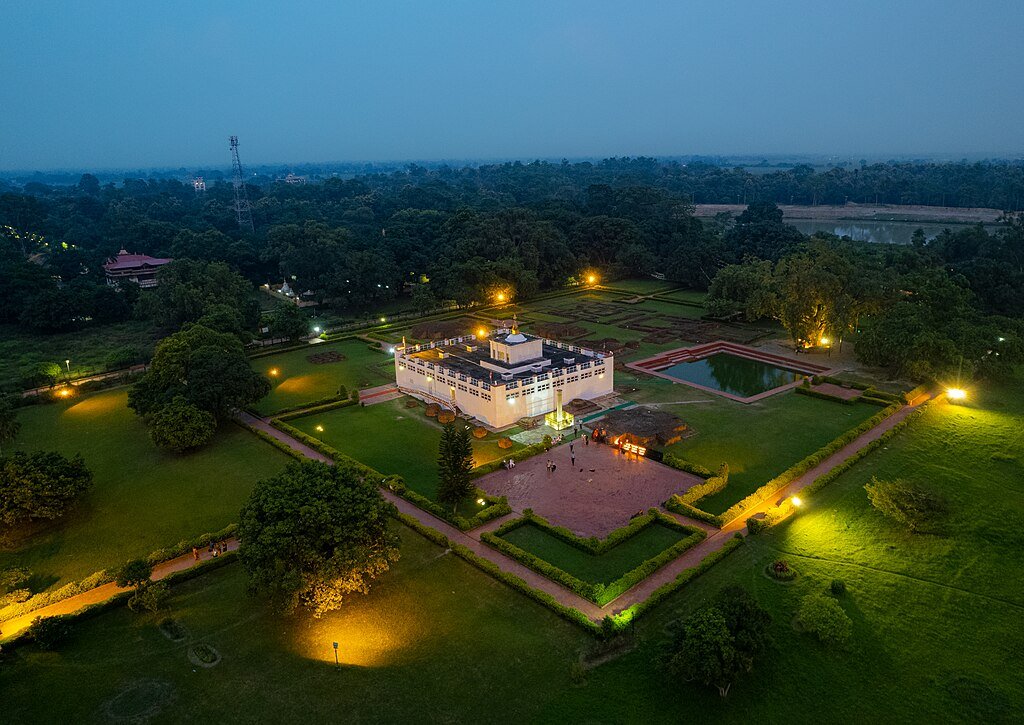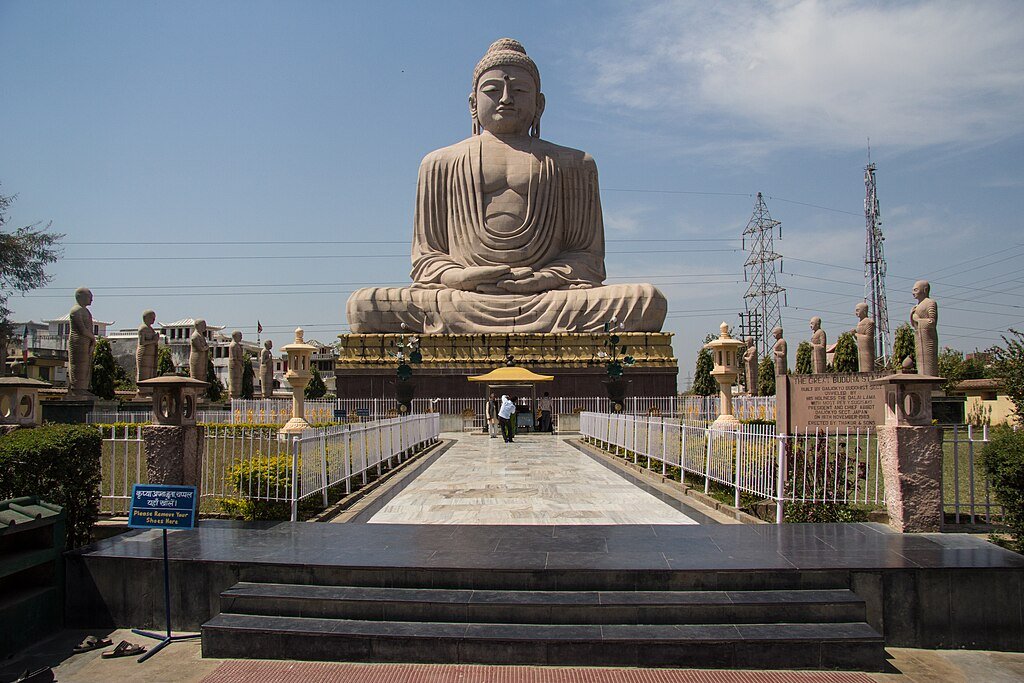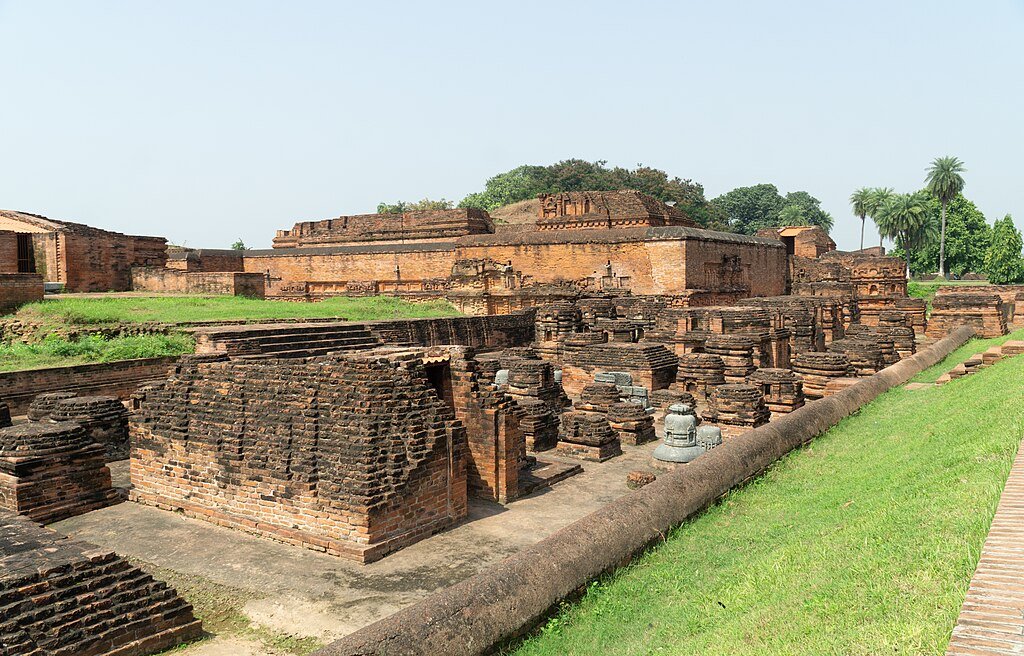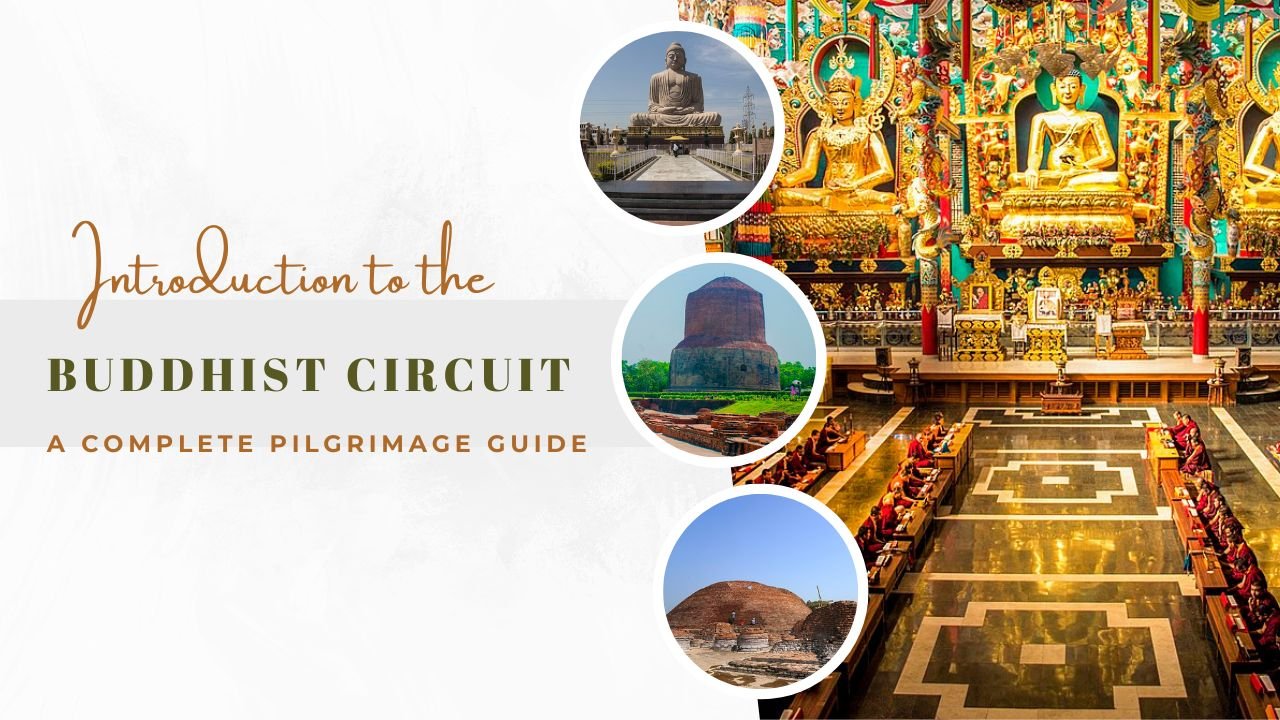Buddhism is more than a religion. It’s a journey of self-discovery, compassion, and peace. For millions of pilgrims and spiritual travelers around the world, visiting the Buddhist Circuit can fulfill a deep, life-changing purpose. This guide will introduce you to the circuit, highlight its most sacred sites, lay out how to plan your trip, and show how Ghum India Ghum can help make this pilgrimage truly transformational.
1. What Is the Buddhist Circuit?

The Buddhist Circuit (also called Buddhist pilgrimage circuit) refers to a network of historically and spiritually significant places associated with the life of Siddhartha Gautama (Buddha), from his birth, enlightenment, first sermon, to his final nirvana. These sites are primarily in India and Nepal, and are deeply rooted in Buddhist history, mythology, and practice.
Why visit the circuit?
- To follow in Buddha’s footsteps, literally walking from site to site
- To experience deep spiritual reflection — these are not just tourist spots, but places of meditation and reverence
- For cultural immersion — monasteries, local festivals, monks, and ancient ruins
- For a pilgrimage with purpose — many travelers come seeking peace, answers, or simply a reset
2. Key Destinations on the Buddhist Circuit

Here are some of the most important Buddhist pilgrimage sites you’ll likely include in a full circuit trip:
- Lumbini (Nepal) — The birthplace of Buddha
- Bodh Gaya (Bihar, India) — Where Buddha attained Enlightenment
- Sarnath (Uttar Pradesh, India) — Where he gave his first sermon
- Kushinagar (Uttar Pradesh) — Where he passed away (Mahaparinirvana)
- Vaishali (Bihar) — A place of many firsts in Buddha’s life
- Rajgir & Nalanda (Bihar) — For meditation, monastic life, and ancient Buddhist universities
- Shravasti, Kapilvastu, Sankissa, Lauria Nandangarh, Barabar Caves — Other deeply historic but slightly less-visited sites
3. Why This Circuit Is Unique & Powerful
Spiritual Resonance

Each site on the Buddhist Circuit is not just a monument, but a living spiritual center. Monasteries flourish, monks chant, pilgrims meditate, and rituals continue just as they have for centuries.
Historical Depth

Many sites are archaeologically rich, from the ruins of Nalanda University to ancient stupas, Ashoka pillars, and caves that date back to early Buddhist and pre-Buddhist traditions.
Cultural Experience

Visiting these places gives you insight into the local Buddhist communities — Tibetan, Theravada, Mahayana, depending on the region. You’ll often see monks in robes, attend prayer sessions, eat at monastery kitchens, and engage with the local culture in a way that transcends tourism.
Scenic Diversity
The circuit covers a wide geographic area, from the plains of Uttar Pradesh and Bihar to the hills around Lumbini in Nepal. This variety makes the journey visually and emotionally rich.
4. How to Plan Your Buddhist Circuit Trip

Choosing Your Route
Depending on how much time and energy you have, you can structure your trip in several ways:
- 7-Day Circuit: Visit the major sites (Lumbini, Bodh Gaya, Sarnath, Kushinagar)
- 10-Day Circuit: Add Rajgir, Nalanda, and Vaishali
- 14-Day (or More) Circuit: Explore the lesser-known but deeply significant sites like Sankissa, Shravasti, Lauria Nandangarh, et al.
Best Time to Visit
- October to March is generally the most comfortable period — cool climate, dry weather, and fewer chances of monsoons.
- April to June can get very hot, especially in the plains of Uttar Pradesh and Bihar.
- Monsoon season (July-September) may restrict travel to some sites and make road travel difficult.
How to Get There & Move Around
- Entry Points: Major cities like Delhi, Varanasi, Patna, or Kathmandu
- Transport: Use a mix of trains, private taxis, and buses to connect between pilgrimage sites
- Local Travel: In each city/town, hiring local guides and private transport is recommended for convenience and safety
Accommodation Options
- Monastery Guesthouses: For a spiritual stay (often low-cost, basic but deeply authentic)
- Mid-range Hotels: In nearby towns/cities
- Luxury Options: Available near major pilgrimage centers if comfort is your priority
5. What to Expect on a Spiritual Pilgrimage

- Quiet Reflection: Many sites encourage meditation; you’ll find places to sit, reflect, and even meditate under the Bodhi Tree or near stupas.
- Rituals & Ceremonies: Daily prayer sessions, alms giving, chanting, and festivals if you time your visit right.
- Cultural Exchange: Interact with monks, nuns, pilgrims from around the world; learn about monastic life, Buddhist teachings, and local customs.
- Photography vs. Respect: Some spots may restrict photography (especially inside temples or meditation areas), so always ask or check guidelines.
- Mindful Travel: Since it’s a pilgrimage, not a regular tourist trip, dress modestly, behave respectfully, and follow local customs.
6. Ghum India Ghum’s Buddhist Circuit Tour Packages
If you’d rather travel with a guided, well-organized plan, Ghum India Ghum offers excellent packages that take care of all logistics, transport, stay, guides, permits, and local experiences.
Some highlights of their packages (from their Buddhist Circuit Tour Packages):
- Multiple durations: 7-day, 10-day, and 14-day circuits
- Local expert guides familiar with Buddhist history & pilgrimage routes
- Comfortable accommodation, including monastery stays when possible
- All transport covered: city-to-site transfers, internal travel, and local pick-up/drop
- Flexibility to tweak the itinerary to include more or fewer sites
By choosing Ghum India Ghum, you get a spiritually immersive yet well-supported journey — ideal for first-timers and seasoned pilgrims alike.
7. Tips for a Smooth & Meaningful Buddhist Pilgrimage
- Pack Light but Smart: Include comfortable walking shoes, modest clothing, a water bottle, and a small backpack.
- Respect Local Culture: Dress conservatively (long sleeves, pants), take off shoes before entering temples, and follow photography rules.
- Get Travel Insurance: Important for health, especially if traveling across India and Nepal.
- Stay Hydrated & Eat Wisely: Local food is great, but try to carry some familiar snacks for long road journeys.
- Take Time to Reflect: Schedule slack time in your itinerary, not just sightseeing but meditation, journaling, or simply being present.
- Learn About Buddhism: A little background on Buddha’s life, the Four Noble Truths, and basic Buddhist philosophy can make the trip far more enriching.
Conclusion
The Buddhist Circuit is more than just a travel itinerary, it’s a sacred journey. Whether you’re deeply spiritual or simply curious, walking through the places where Buddha was born, enlightened, taught, and passed away is transformative.
With Ghum India Ghum’s carefully designed pilgrimage packages, you can make this journey deeply meaningful, well-organized, and stress-free.
In the next post in this series, we’ll dive into Lumbini — the birthplace of Buddha, exploring the sites, history, and how you can experience this place at its spiritual best.
If you’re ready to plan your own Buddhist Circuit pilgrimage, check out Ghum India Ghum’s Buddhist Circuit Tour Packages here. Let me know if you want me to help you compare different itinerary options (7-day vs 10-day vs 14-day) or build a custom package for your audience.

